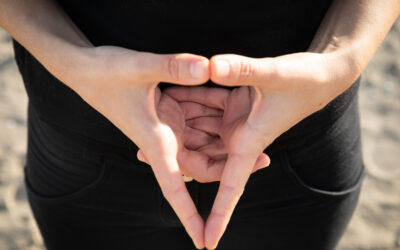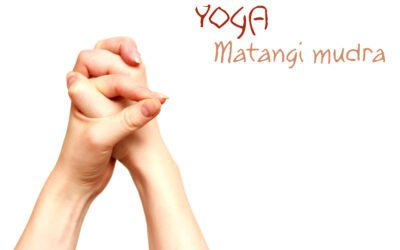The Kali Mudra, also known as the “Gesture of the Goddess Kali,” is a powerful hand gesture practiced in various forms of yoga & meditation. This mudra has derived from Hindu mythology, is believed to invoke the fierce and transformative energy of the goddess Kali. By forming specific hand positions and directing our intention, the Kali Mudra can offer numerous benefits for both mental & physical wellbeing. However, as with any practice, it is essential to be aware of the potential side effects, proper technique & necessary precautions associated with this mudra. In this article, we will explore the benefits, side effects, how to perform the Kali Mudra & important precautions to ensure a safe and effective practice.
Benefits of Kali Mudra.
Here are some of the key benefits of practicing Kali Mudra:(1)
1. Energy Enhancement.
Kali Mudra is believed to activate & stimulate the flow of vital energy or prana throughout the body. By bringing the thumb and middle finger together, it is said to create a circuit of energy, promoting the balanced flow of prana and enhancing overall vitality.
2. Increased Focus & Concentration.
This mudra is thought to enhance mental clarity, focus & concentration. When practiced regularly, it can help calm and stabilize the mind, allowing for improved attention & mental performance.
3. Emotional Balance.

Kali Mudra is associated with the fierce & transformative energy of the goddess Kali. By connecting with this energy, the mudra can help release and transform negative emotions like anger, fear and anxiety, promoting emotional balance & inner peace.
4. Empowerment & Inner Strength.
The symbolism of the goddess Kali in this mudra represents empowerment & inner strength. By practicing Kali Mudra, individuals can tap into their own inner power, boosting self confidence, courage & resilience.
5. Removal of Obstacles.
Kali is often portrayed as the destroyer of obstacles & negative forces. By practicing this mudra, individuals can invoke the goddess’s energy to overcome challenges, remove blockages and clear the path towards personal growth and success.
6. Transformation & Rebirth.
Kali Mudra is associated with transformation and rebirth, representing the shedding of old patterns and embracing new beginnings.
By practicing this mudra, individuals can cultivate a sense of renewal, letting go of what no longer serves them & embracing positive transformation in their lives.
7. Balancing Energies.
This mudra is believed to balance the masculine & feminine energies within an individual, promoting harmony and union between these polarities. By balancing these energies, individuals can experience a greater sense of wholeness and integration.
8. Spiritual Awakening.
Kali Mudra is often practiced during meditation and spiritual practices to deepen one’s connection with the divine and facilitate spiritual awakening.
By invoking the goddess Kali’s energy, individuals can experience a heightened sense of spirituality, inner awakening, and expansion of consciousness.
| 💡 Tips FreakToFit.com Incorporating Kali Mudra into your yoga or meditation practice can offer numerous benefits, supporting your overall wellbeing & helping you tap into your inner power, transformation and spiritual growth. |
Side Effects of Kali Mudra.
It is important to note that the side effects mentioned below are not experienced by everyone and individual variations may occur:
1. Overstimulation.
Kali Mudra involves the joining of the index finger and thumb while extending the remaining three fingers.
This hand position can generate a significant amount of energy within the body, leading to overstimulation in some individuals. This excessive energy may result in feelings of restlessness, anxiety, or irritability.
2. Emotional Release.
The energy unleashed through Kali Mudra can sometimes trigger emotional release in practitioners. As stagnant emotions are brought to the surface, one may experience unexpected bouts of sadness, anger or even laughter.
While this emotional release can be cathartic, it may also be overwhelming for some individuals.
3. Physical Discomfort.
Holding Kali Mudra for an extended period can lead to physical discomfort, particularly in the fingers, wrist & forearm.
This is more likely to occur if the hand position is not properly aligned or if one has pre existing conditions like arthritis or carpal tunnel syndrome. It is essential to listen to your body & modify the gesture if necessary.
4. Energy Imbalances.
Kali Mudra is known for its ability to activate and balance the energy centers within the body, known as chakras. However, excessive or improper practice may disrupt this balance, leading to energy imbalances. This can manifest as headaches, dizziness or even disturbances in sleep patterns.
5. Increased Sensitivity.
Regular practice of Kali Mudra may heighten one’s sensitivity to external stimuli. While this can be beneficial in terms of increased awareness & intuition, it can also make individuals more susceptible to sensory overload. This heightened sensitivity may require adjusting one’s lifestyle and environment to avoid overwhelm.
6. Spiritual & Psychological Experiences.
Due to the powerful energy generated by Kali Mudra, practitioners may encounter spiritual or psychological experiences that they are unprepared for.
These can range from vivid dreams and visions to altered states of consciousness. It is crucial to approach these experiences with caution and seek guidance if needed.
| 💡 Tips FreakToFit.com It is important to approach Kali Mudra with mindfulness & respect, gradually increasing the duration and intensity of the practice as your body and mind become accustomed to it. If any of these side effects persist or cause significant discomfort, it is advisable to consult a qualified yoga instructor or healthcare professional for guidance and support. |
How To Do Kali Mudra?
- Find a comfortable sitting position with your back straight and shoulders relaxed.
- Close your eyes and take a few deep breaths to relax your mind and body.
- Bring your palms together in front of your chest, with the fingertips touching and the thumbs pointing towards the body.
- Slowly separate the ring fingers and little fingers, keeping the other fingers & thumbs touching.
- Gently press the ring fingers and little fingers together, creating a loop or a lock.
- Rest your hands on your thighs or in your lap, with the palms facing upwards.
- Relax your hands and fingers, allowing them to settle into the mudra.
- Focus on your breath and bring your awareness to the energy flowing through your hands.
- You can hold the Kali mudra for as long as you like, but aim for at least 5 to 10 minutes to experience its benefits.
- To release the mudra, slowly bring your hands back to the starting position with palms together, and then release them.
Precautions During Kali Mudra.
- Find a quiet & comfortable space to practice Kali Mudra.
- Ensure that your body is in a relaxed and upright position.
- Begin by taking a few deep breaths to center and ground yourself.
- Be aware of any physical or mental discomfort during the practice and adjust accordingly.
- If you have any medical conditions or injuries, consult a healthcare professional before practicing Kali Mudra.
- Start with shorter durations and gradually increase the practice time.
- Listen to your body and do not force any movements or stretches.
- Stay hydrated before, during, and after the practice.
- Avoid eating a heavy meal right before practicing Kali Mudra.
- If you feel any pain, dizziness, or discomfort, stop the practice and seek medical advice if necessary.
- Always practice Kali Mudra under the guidance of a qualified instructor, especially if you are a beginner.
My Personal Experience on Kali Mudra.
Kali Mudra is a powerful hand gesture that I have personally experienced during my yoga practice. This mudra is associated with the goddess Kali, who represents transformation & liberation.
When I first incorporated Kali Mudra into my practice, I felt a surge of energy and a sense of empowerment. The gesture involves interlocking the fingers and extending the index fingers, symbolizing the sword of wisdom.
As I held this mudra, I felt a deep connection to my inner strength and a release of any fears or limitations. It helped me to tap into my own potential and face challenges with courage and determination.
Kali Mudra has become a transformative tool for me, reminding me to embrace my authentic self and embrace the transformative power within.
Frequently Asked Question.
Kali Mudra can be practiced for as long as desired or until the desired effect is achieved. It can be performed during meditation, pranayama (breathing exercises) or as part of a yoga practice.
Yes, Kali Mudra can be combined with other mudras to enhance their effects. For example, it can be performed along with Chin Mudra (thumb and index finger touching) or Bhairava Mudra (thumb and little finger touching) to deepen the meditation or pranayama practice.
Yes, Kali Mudra can be practiced by anyone, regardless of age or physical fitness level. However, it is always recommended to start slowly and gradually increase the duration and intensity of the practice.
Kali Mudra is primarily used for its spiritual and energetic benefits rather than as a specific healing technique. However, some practitioners believe that it can help in releasing emotional blockages and promoting overall wellbeing.
There are variations of Kali Mudra where the thumb touches different fingers instead of the ring finger and little finger. These variations are believed to have slightly different effects on the energy flow within the body.
Yes, Kali Mudra can be performed using one hand if desired. The same hand gesture is made by bending the ring finger and little finger to touch the thumb while keeping the index and middle fingers extended.
Bottom Line.
Kali Mudra is a powerful hand gesture that holds significant symbolism and benefits for the practitioner. By forming the hand into a fist & extending the index finger, one can tap into the energy of the goddess Kali and channel her fierce and transformative qualities. This mudra can be used to cultivate inner strength, courage, and determination, as well as to release negative emotions and destructive patterns. Its association with Kali, the goddess of time, death, and rebirth, reminds us of the impermanence of life and the need to embrace change. Incorporating Kali Mudra into our yoga or meditation practice can deepen our connection to ourselves, enhance our personal growth, and invite positive transformation into our lives.
+1 Source
Freaktofit has strict sourcing guidelines and relies on peer-reviewed studies, educational research institutes, and medical organizations. We avoid using tertiary references. You can learn more about how we ensure our content is accurate and up-to-date by reading our editorial policy.
- Effect of yoga mudras in improving the health of users: A precautionary measure practice in daily life for resisting the deadly COVID-19 disease; https://www.ncbi.nlm.nih.gov/pmc/articles/PMC9347266/

 Workout
Workout
 Meditation
Meditation


 Stories
Stories


 Podcast
Podcast E-book
E-book
















